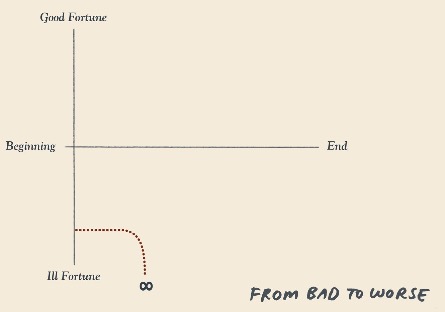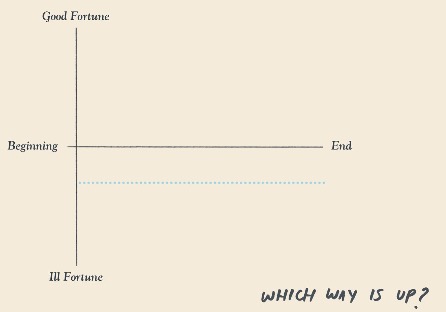Perspectives on Narratives, And The Future of Personal and Systems Transformation -1
- Ashish Manwar

- Nov 21, 2023
- 4 min read
To take a position about futures involves discerning narratives about reality. That demands ongoing efforts to find your bearing, while navigating the external environment and internal state; both of which can be dynamic and disorienting. In this part I explore the value of attending to personal and systemic priorities in building alternate perspectives.

Of course you’re interested in restorative and positive futures! Stories of futures that are sustainable and equitable, because hopefully you and I could be in them. But you’re also agonising over today’s adverse visions and news. Nervously anticipating maybe there’s something redeemable, or maybe not. Whether you call them images or narratives, these ‘stories’ are tethered to our cultures’ perceptions, core myths and worldviews. They reverberate through cultures, they trigger specific responses and at times morph the capability to distinguish reality. Living this way seems like that dream where you’re in free fall and are subconsciously surprised nothing has arrested this fall yet. So jarring, it wakes you out of your story. At times you wish it was a dream.
So how do you then distinguish and make sense of today’s emerging narratives and try to arrive at positive perspectives of the future?
One conventional way is to slice stories, fragment science, religion, economics, peoples. To examine in isolation the questions that matter primarily to the dominant stakeholder. Narratives, like effective stories or poems focus on one or a few dominant character journeys, fading the others. This removal of the others in neatly reduced narratives, naturally triggers guarded curiosity about the missing people and missing perspectives. Questions like: How does it play out?; Does it end well?; Can I have hope?; What about my identity?; My investments?; My vote?; My faith? It’s about ‘my value’ as an individual or a collective. This inductive and atomised sensemaking examines and traces story fragments to optimise decisions and secure favourable consequences for one stakeholder.
Another approach across disciplines and time is mapping the big picture; to condense and synthesise patterns of stories. Grappling with the vast terrain of all lived experiences requires a taxonomy that orders structural components, from individual life stories - to the rise and fall of systems and empires. These frameworks template-ise universal story shapes, and label patterns and outcomes. They project control - by drawing defensive boundaries around perceived randomness in our stories. I see this as deductive sensemaking efforts ranging for example from Aristotle’s Poetics to Robert Cambell’s The Hero with a Thousand Faces and Otto Scharmer’s Theory U.
(I invite you to suggest other works or initiatives that we could explore)
Thanks to such efforts, we have some structure to hang our thinking on. You encounter the structure of the beginning, middle and end, the character arcs, reversals and shifting burdens, the inner journey, even in Kurt Vonnegut’s shapes of stories. This is handy not only for the craft of storytelling, but also for decision making and organisational learning. The case study approach, for instance, reinforces learning and judgment from story patterns, to distinguish markers in the narrative that lead to positive futures.
To a story consumer - this provides tremendous power, getting a handle on what’s happening and drawing lessons. However effective sensing and sensemaking demand much more diversity and depth of perspectives to notice shifts in the story and subtext. One of these dramatic shifts revolves between what the Theory U and the Hero’s Journey mark as the outer and inner journey. Deep seated internal needs - often wounds - bulldoze attention away from external wants. That prospect can be best described as a civil war in the character’s soul, at the individual and collective level.
As if these forced changes of priority are not disorienting enough, the stakes rise. You’re cornered to choose what you value the most; in a polycrisis - which hill is worth dying for? That choice and change in value determines what was conventionally seen as comedy or tragedy, or more simply redemptive or lost futures. I wonder how cultures survive these shifts.

I use CLA to frame this movement. The approach invites you to examine and reimagine the narrative arcs and their roots, starting from visible headlines, to the depths of stakeholder views, to deep metaphors and myths, and all the way back. It applies to alternative futures and the transformation process. So, in CLA terms, moving past simple symptomatic stories to worldviews and metaphors, counts as progress. This depth is needed for both the story and the sensemaking to form alternate perspectives, before one can resurface to a preferred future.
In my experience, this shift occurs frequently when facilitating anticipatory or foresight sessions. Whether the problem statements are arrayed as crises or aspirations, the session story arc oscillates between external stimuli and shared wounds. It tends to burrow inward toward resolving needs and seeing goals in new light. Therefore it helps to be aware of the participants’ ensuing encounter with a new trigger ‘need’. You need safe spaces to sift through confounding narratives and newer priorities, and attend to that conflict. Since ambient stories and narratives graduate to be adopted as perspectives and identity, so examining what to believe becomes an expression of agency.
And yet the questions remain, on what basis do you discern and adjust your perspective, and on what grounds do you respond differently? Preparing for this sub-surface oscillation between the personal and the systemic, speaks to essential strategic readiness for facilitating anticipation!
I submit that this agile stewardship is important to make headway at reaching transformative goals - in parallel - both at complex systems and personal levels. The openness to adapt facilitation agendas may appear organic, but that is part of dealing with living systems. Understanding that participants’ stories will be unique, yet tethered to the external asks. It implies that their journey and story shape will afford them different lenses to frame and reframe goals and the paths to them.
All that underlines some needs and avenues to cultivate space for alternate perspectives - these are vital to complement, and at times to cut through, monolithic narratives, story arcs and solutions. In the subsequent blog I look at grounds for directional change in perception, hope and behaviour as narrative expressions.
References
-Aristotle, Poetics http://classics.mit.edu/Aristotle/poetics.html,
-Campbell, J. (2012) The hero With A Thousand Faces (3rd ed.) New World Library.
-Senge P., Scharmer C.O., Jaworski J., Flowers B.S. (2004) Presence: Human Purpose and the Field of the Future. Double Day, Random House
-Clinton R.J., (1988) The Making of a Leader. Navpress
-Acemoglu D., Robinson J.A., (2012) Why Nations Fail: The Origins of Power, Prosperity and Poverty 1st ed. Crown
-Ovans A.,To Tell Your Story, Take a Page from Kurt Vonnegut https://hbr.org/2014/04/to-tell-your-story-take-a-page-from-kurt-vonnegut
Images
-Ashish Manwar















Comments